Four Common Wing Shapes In Birds
Four Common Wing Shapes in Birds
There are four general wing shapes that are common in birds: Passive soaring, active soaring, elliptical wings, and high-speed wings.
Passive soaring wings have long primary feathers that spread out, creating “slots” that allow the bird to catch vertical columns of hot air called “thermals” and rise higher in the air. Examples of birds with this wing type include eagles, most hawks, and storks. These Bald Eagles are classic examples of birds with passive soaring wings:

Active soaring wings are long and narrow, allowing birds to soar for a long time. However, these birds are much more dependent on wind currents than passive soaring birds. Examples of birds with this wing type are albarosses, gulls, and gannets. These California Gulls show good examples of the active soaring wing type:

Elliptical wings are good for short bursts of high speed. While they allow high speed, the speed cannot be maintained. Examples of birds that have this wing type are crows, ravens, blackbirds, sparrows, and thrushes such as the American Robin. These Common Ravens are good examples of birds with elliptical wings:

High-speed wings are long and thin, but not nearly as long as birds with active soaring wings. As the name suggests, birds with this wing type are incredibly fast, but unlike those with elliptical wings, these birds can maintain their speed for a while. Examples of birds that have this wing type are swifts, ducks, falcons, terns, and sandpipers. This Forster’s Tern is a good example of a bird with high-speed wings.

(http://www.birds.cornell.edu/education/kids/books/wingshapes)
More Posts from Curiositytherover and Others
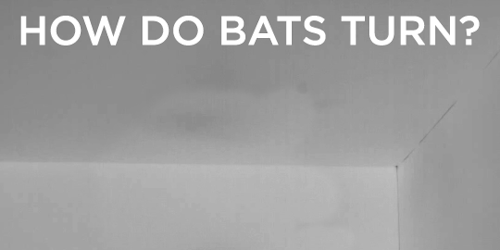
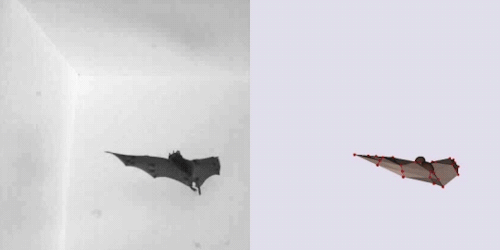

A new study (published in PLOS Biology) investigated how bats make sharp turns in the air, particularly when they have to grab the ceiling. It turns out aerodynamics have very little to do with it - it’s all about inertia. Just as a figure skater clutches his arms to his chest to increase his speed, bats pull in their wings to help them make turns.
You can read all about it (and see more video) in this piece by my friend Nsikan Akpan over at PBS Newshour.
Asteroid Crash Course!
Asteroids can be hazardous to life on Earth, but they also provide clues about the early solar system. Denton Ebel, curator in the Museum’s Division of Physical Sciences, explains how asteroids formed and the varying degrees of destruction they cause when they fall to Earth.
What Is An Asteroid?
Meteorite, Meteor: What’s the Difference?
Why Are There No Planets in the Asteroid Belt?
What Were the Biggest Asteroids to Hit Earth?
Can Asteroids Be Deflected?
And don’t miss the videos, What Happens When Large Meteorites Fall to Earth?, and How Are Large Asteroids Tracked?

How do electric guitars work? Learn more about the materials that make it possible with today’s graphic: http://wp.me/s4aPLT-guitar

One of the physicists who helped find the Higgs boson, Elina Berglund, has spent the past three years working on something completely different - a fertility app that tells women when they’re fertile or not.
It’s not the first fertility app out there, but Berglund’s app works so well that it’s been shown to help women avoid pregnancy with 99.5 percent reliability - an efficacy that puts it right up there with the pill and condoms.
Best of all, the app doesn’t have any side effects, and just requires women to input their temperature daily to map their fertility throughout the month.
Back in 2012, Berglund was working at CERN on the Large Hadron Collider experiment to find the famous Higgs boson. But after the discovery of the particle, she felt it was time to work on something completely different.
“I wanted to give my body a break from the pill,” she told Daniela Walker from Wired, “but I couldn’t find any good forms of natural birth control, so I wrote an algorithm for myself.”
The resulting app is called Natural Cycles, and so far, it’s had pretty promising results.
Continue Reading.
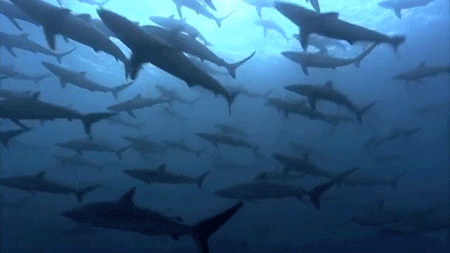
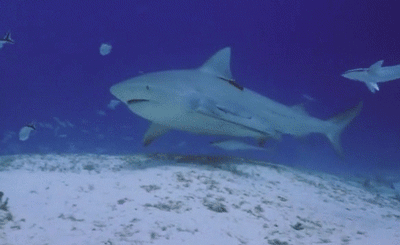
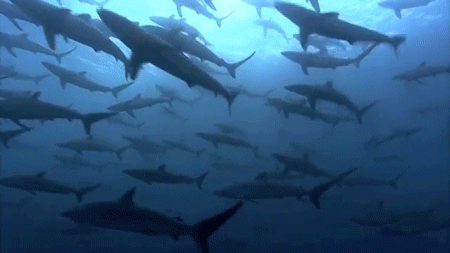
Why music might be killing sharks
For too long, sharks have been portrayed and perceived as the menacing, lurking creatures in the deep. Contrary to popular belief, we are much more of a threat to them than they are to us.
Researchers have found that the ominous music that often accompanies even documentary footage of them has inspired excessive fear about sharks.
In an experiment at UC San Diego, participants watched footage of sharks. Some scenes featured uplifting music, and others had a more daunting score.
The effect was what you might expect. Viewers saw sharks as intimidating creatures when they they also heard ominous music.
But with uplifting music (or none at all), viewers had a more positive impression of sharks.
This is problematic because rarely do we see shark footage without the ominous music, and the negative portrayals of sharks may be hindering conservation efforts.
“We know from prior research that conservation progress for sharks is sluggish compared to marine mammals and that this slow response may be due in part to the societal marginalization of sharks,” says study co-author Elizabeth Keenan.
After all, in the words of Senegalese conservationist Baba Diou, “we will conserve only what we love.”
And while they’re still not exactly a furry, cuddly rabbit, consider this: you’re more likely to be struck by lightening than fall prey to a fatal shark attack.


The 7th Row of the Periodic Table is Finally Complete
And with a single announcement, millions of text books around the world have been made incomplete—out of date. This comes as four new elements are added to the periodic table, finally completing the table’s seventh row. The elements, 113, 115, 117, and 118 were discovered by scientists working in Japan, Russia, and America. Now, the International Union of Pure and Applied Chemistry (IUPAC, the body that is charged with overseeing standards in the world of chemistry) has confirmed the finds. Ultimately, these are the first elements to be added to the table since 2011. They were verified in an announcement released on Dec. 30.
Learn more: http://futurism.com/links/the-7th-row-of-periodic-table-is-finally-complete/
Solar System: Things to Know This Week
This week, we’re looking at MAVEN’s exploration of Mars, the Orionid meteor showers, Mercury’s “great valley” and more.

1. Celebrating MAVEN
MAVEN, the Mars Atmospheric and Volatile Evolution, was the second mission selected for our Mars Scout program and the first to explore the planet’s upper atmosphere . It launched on November 18, 2013 and entered orbit around Mars on September 21, 2014.
+ MAVEN Quick Facts

2. Jupiter Moon Dance
This time-lapse sequence of Hubble Space Telescope images shows Jupiter’s moon Europa as it moved across the planet’s face over the course of 19 minutes. Europa is at the bottom center on Jupiter’s disk, the Great Red Spot to the left and Europa’s shadow to its right. The video was created by combining six snapshots taken in ultraviolet light with Hubble’s Wide Field Camera 3.
+ Learn more

3. The Orionid Meteor Shower
Orionid shower peaks November 28. Look for the constellation Orion in the Southeast sky by 9 p.m. Using binoculars, look for the Orion Nebula.

4. Comet Warming Up!!
Comet 45P/Honda-Mrkos-Pajdu áková will brighten to expected stunning binocular visibility in mid to late December, but is near Venus on November 23rd.
+ Track the Comet

5. Mercury’s “Great Valley”
A newly discovered “great valley” in the southern hemisphere of Mercury provides more evidence that the planet closest to the sun is shrinking. Using stereo images from our MESSENGER spacecraft to create a high-resolution map, scientists have discovered that revealed the broad valley – more than 620 miles (1,000 kilometers) long – extending into the Rembrandt basin, one of the largest and youngest impact basins on Mercury. About 250 miles (400 kilometers) wide and 2 miles (3 kilometers) deep, Mercury’s great valley is smaller than Mars’ Valles Marineris, but larger than North America’s Grand Canyon and wider and deeper than the Great Rift Valley in East Africa.
+ Learn more
Discover the full list of 10 things to know about our solar system this week HERE.
Make sure to follow us on Tumblr for your regular dose of space: http://nasa.tumblr.com



What would Earth’s skies look like with Saturn’s rings?
Illustrator and author Ron Miller specializes in, among other things, incredible visualizations of other worlds. Now, Miller brings his visualizations back to Earth for a series exploring what our skies would look like with Saturn’s majestic rings. Miller strived to make the images scientifically accurate, adding nice touches like orange-pink shadows resulting from sunlight passing through the Earth’s atmosphere. He also shows the rings from a variety of latitudes and landscapes, from the U.S. Capitol building to Mayan ruins in Guatemala.
Images and text via

Antibiotic Resistance: Scientists Uncover the Secret Behind This Powerful Weapon
Of course, humans and bacteria are somewhat different. As a result, it’s no surprise that these tiny creatures transfer genes differently from humans and even plants.
Besides binary fission, where the genetic material is segregated equally into two daughter cells, bacteria also have another method of gene transfer—namely, horizontal gene transfer (HGT). HGT has long been known to be responsible for spreading unique traits in bacteria, especially antibiotic resistance. Though we’ve long known that it is able to exert a rather strong effect, the why (or how) has remained a mystery.
At least, until now.
Researchers from Oxford University have demonstrated, through mathematical modelling, that the secret is migration, whereby movement between communities of microbes greatly increases the chances of different species of bacteria being able to swap DNA and adopt new traits.
Read more & check the video at http://futurism.com/links/antibiotic-resistance-scientists-uncover-the-secret-behind-this-powerful-weapon/

Astronaut Scott Kelly, who is spending one year on the Space Station, tweeted this image this morning: “#California in a golden state just before sunrise”
via reddit
-
 chuchuana reblogged this · 1 month ago
chuchuana reblogged this · 1 month ago -
 aionions-iqlauk liked this · 10 months ago
aionions-iqlauk liked this · 10 months ago -
 aionions-iqlauk reblogged this · 10 months ago
aionions-iqlauk reblogged this · 10 months ago -
 tacochippy liked this · 2 years ago
tacochippy liked this · 2 years ago -
 frostysouls liked this · 2 years ago
frostysouls liked this · 2 years ago -
 wingsforthewicked reblogged this · 2 years ago
wingsforthewicked reblogged this · 2 years ago -
 glitch-core liked this · 2 years ago
glitch-core liked this · 2 years ago -
 shadowgryphon liked this · 3 years ago
shadowgryphon liked this · 3 years ago -
 kavinasd liked this · 3 years ago
kavinasd liked this · 3 years ago -
 glinmare-depths liked this · 4 years ago
glinmare-depths liked this · 4 years ago -
 peregrine-renegade reblogged this · 5 years ago
peregrine-renegade reblogged this · 5 years ago -
 andinimacoesblog liked this · 5 years ago
andinimacoesblog liked this · 5 years ago -
 cryptid-bird liked this · 5 years ago
cryptid-bird liked this · 5 years ago -
 xxvi0lent-vahlkampfiidaexx reblogged this · 5 years ago
xxvi0lent-vahlkampfiidaexx reblogged this · 5 years ago -
 xxvi0lent-vahlkampfiidaexx liked this · 5 years ago
xxvi0lent-vahlkampfiidaexx liked this · 5 years ago -
 katrinket-in-limbo reblogged this · 6 years ago
katrinket-in-limbo reblogged this · 6 years ago -
 katrinket-in-limbo liked this · 6 years ago
katrinket-in-limbo liked this · 6 years ago -
 fangirling-phoenix liked this · 6 years ago
fangirling-phoenix liked this · 6 years ago -
 themasterplanner reblogged this · 6 years ago
themasterplanner reblogged this · 6 years ago -
 robo-drake09 liked this · 6 years ago
robo-drake09 liked this · 6 years ago -
 megjgreyanswers liked this · 6 years ago
megjgreyanswers liked this · 6 years ago -
 my-world-my-stories reblogged this · 6 years ago
my-world-my-stories reblogged this · 6 years ago -
 tinysnapdragonofdeath liked this · 6 years ago
tinysnapdragonofdeath liked this · 6 years ago -
 last-haven liked this · 6 years ago
last-haven liked this · 6 years ago -
 silentmistynight liked this · 6 years ago
silentmistynight liked this · 6 years ago -
 tipsyteaturtle liked this · 6 years ago
tipsyteaturtle liked this · 6 years ago -
 mathiemarsz reblogged this · 6 years ago
mathiemarsz reblogged this · 6 years ago -
 mathiemarsz liked this · 6 years ago
mathiemarsz liked this · 6 years ago -
 oddterradragon liked this · 6 years ago
oddterradragon liked this · 6 years ago -
 superanonymousthethird liked this · 6 years ago
superanonymousthethird liked this · 6 years ago -
 blackoreobunny liked this · 6 years ago
blackoreobunny liked this · 6 years ago -
 akamxru liked this · 6 years ago
akamxru liked this · 6 years ago -
 miss-miaumiau reblogged this · 6 years ago
miss-miaumiau reblogged this · 6 years ago -
 arrrrtterin reblogged this · 7 years ago
arrrrtterin reblogged this · 7 years ago -
 theunchainedmelody liked this · 7 years ago
theunchainedmelody liked this · 7 years ago -
 fireeaglespirit reblogged this · 7 years ago
fireeaglespirit reblogged this · 7 years ago -
 fireeaglespirit liked this · 7 years ago
fireeaglespirit liked this · 7 years ago -
 occasionally-sketchy liked this · 7 years ago
occasionally-sketchy liked this · 7 years ago -
 kidhellion liked this · 7 years ago
kidhellion liked this · 7 years ago -
 whatever-the-hell-i-want reblogged this · 7 years ago
whatever-the-hell-i-want reblogged this · 7 years ago -
 crackedhalos reblogged this · 7 years ago
crackedhalos reblogged this · 7 years ago -
 ater-nex liked this · 7 years ago
ater-nex liked this · 7 years ago -
 yara122001 liked this · 7 years ago
yara122001 liked this · 7 years ago